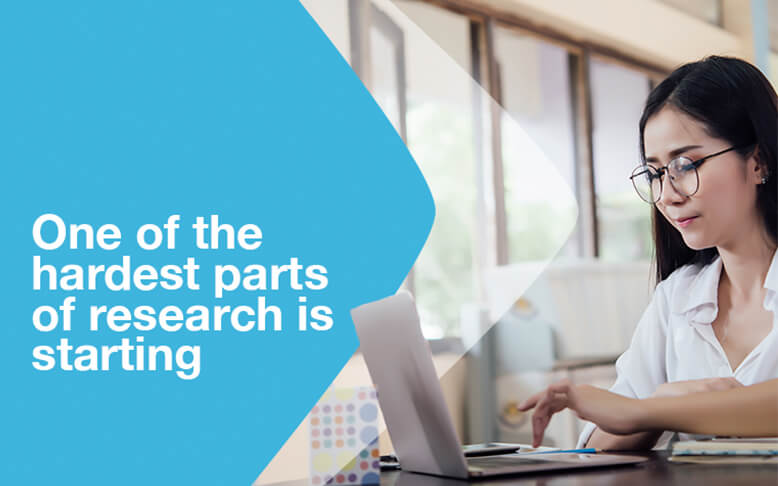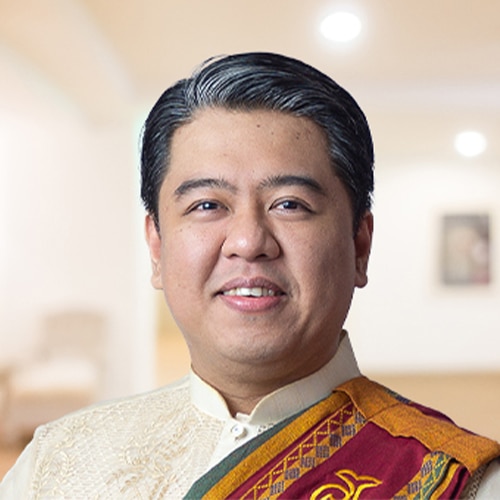Introduction

Doing research is no small task. It requires time, effort, and resources to conduct and see-through the entire process to get to a conclusion. That being said, the hardest part of conducting research is often at the beginning. Have you ever felt stuck at the starting point of conducting your own study? This article will help provide insight on how to have a strong start for your research.
Step One: Identifying possible topics for research

In research, you have a problem when you don’t have a problem!
I have been teaching research to both undergraduate and graduate students for more than a decade, and I always tell students that it’s a problem when we don’t have a question to focus on in research. This is because the main purpose of conducting research is to answer a researchable question or problem. But what is a researchable question? And how do we identify a research problem that’s right for us?
The answer to the first question lies in the definition of research. Research is the systematic collection, analysis, and interpretation of data to answer a question or problem. 1 Based on this, we can assume that not all questions will necessitate research. It needs to be a question that would require us to collect data to be able to answer it. For instance, a question like “What is Type 2 diabetes?” would not require research since it only requires a quick internet search to obtain the answer.
So, how do we identify possible research problems?
There are several likely sources of research questions. The first and most practical source are situations that we encounter while practicing our profession. For instance, while working in the hospital, a dietitian may be curious if a new formula is a better supplement for weight gain among protein-deficient patients, which leads to the conduct of an experimental type of research to answer this question.
Another possible source of research questions is the national research priorities or agenda. The Department of Science and Technology released the “Harmonized National Research and Development Agenda for 2017-2022”, where some of the priority research topics under health are functional foods, and nutrition and food safety. 2 If one intends to get funding for their research, focusing on questions that are related to these topics may be the way to go.
Aside from experience and the national research agenda, we can also identify potential research questions by looking into literature. For instance, we can investigate the effects of certain foods on health and find research questions that still have conflicting research findings or have a paucity of published evidence. Ultimately, the topic we should choose should be something we are interested in and suitable for our expertise so that we can properly lead the research project that will be proposed.
Step Two: Getting to know the different parts of a research proposal

What comes next after the research problem?
Once we have identified a research question, the next step is to build on the information we have on our topic by performing a more extensive review of literature. Doing so will enable us to start writing our research proposal. In particular, the first two sections of our research paper – the “Background” and the “Literature Review” – are mostly syntheses of the information that we obtained from literature.
Once the first two sections of the proposal are written, we usually proceed with writing the “Methods” section. This section involves the identification and description of the study design, sampling and sample size, data collection procedure, data processing and analysis plan, and ethical considerations of the research. Such details require knowledge not just on the research topic itself, but also knowledge about Epidemiology and Biostatistics. As such, writing this section can be a little intimidating, especially if we have little experience in writing a research proposal. One way to overcome this hurdle is to review the methods used in previous literature so that we can have an idea on the study designs, data collection procedure, and analyses that are suitable for our research.
These three sections are the main parts of a research proposal. But aside from these sections, we also need to carefully prepare the appendices such as the research timeline and line-item budget. It is very important to come up with a realistic and feasible timeline and budget for your research. A funding agency may approve or disapprove your proposal depending on these items. For instance, if the timeline is too short (e.g., three months to conduct a nationwide survey) or if the budget is too excessive (e.g., purchasing a software costing a million pesos when there is an open-source alternative) could lead to the rejection of a research proposal.
Step Three: Collaborate

No researcher is an island. Asking for help is necessary to make good research.
Research is more of a group activity than an individual activity. This is especially true for applied research or research that cannot be done inside a laboratory. We would most likely need to find reliable research associates or assistants who can help with both the technical and administrative aspects of the study. For example, if we were to conduct a survey to determine the prevalence of hypertension among Metro Manila residents, it would be unrealistic to conduct it without research assistants who can help in the household visits and measurements necessary in this research.
The help of experts from other fields may also be necessary to write and conduct certain parts of the research. For instance, if the research topic requires the assessment of clinical depression and the main investigator is not a psychiatrist, it is necessary to include this expert as either part of the research team or as a consultant. The same goes for determining the sample size and statistical tests suitable for the research. Although reviewing the literature can offer some help in writing the “Methods” section, it is still ideal to consult a biostatistician who can correctly determine these aspects of research.
Aside from being a necessity, remember that funding agencies prefer it when research is collaborative because it ensures that people with the proper skill set, and know-how are assigned in handling the appropriate parts of the research project. These experts should be brought on board at the very start of research to ensure that the research proposal is constructed properly.
Conclusion
Conducting research may be a daunting task, especially when we are just newbies in the field. However, as they say, “practice makes perfect”, and the proper knowledge, skill set, and help make it possible to fluidly write and conduct research.
Message for RNDs
Ensure that you have a clear and measurable research objective. The objective is like the steering wheel of a vehicle since it determines the other parts of your research (e.g. study design, sampling, sample size).


 Kim L. Cochon , RND, MSc
Kim L. Cochon , RND, MSc















No comments here yet.